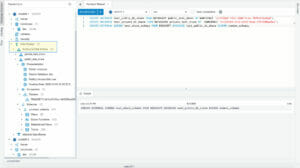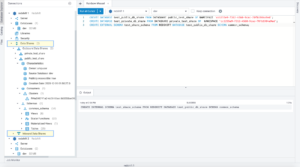How to Use Amazon Redshift Data Sharing in Coginiti Pro and Coginiti Premium
Amazon Redshift is one of the most popular databases Coginiti Pro and Coginiti Premium users connect to on a daily basis. As an AWS (Amazon Web Services) Service Ready Partner with Amazon Redshift Ready designation, we’ve been working hard to support the breadth of features Amazon Redshift offers and has been adding to its data platform.
Today we’re excited and proud to announce Coginiti support for the newly released Amazon Redshift Data Sharing. Amazon Redshift Data Sharing enables sharing data and selected objects across multiple Amazon Redshift clusters in a producer and consumer model.
On an Amazon Redshift producer cluster, you can create a data share associated with a specific database on the cluster. You can then add database objects to the data share, such as schemas, tables, views, and user-defined functions from that database that the cluster will share with consumer clusters for read purposes.
Amazon Redshift data sharing consumers are clusters that receive data shares from producer clusters. To consume shared data, the consumer cluster administrator creates an Amazon Redshift database from the data share and then assigns permissions on the database to appropriate users and groups in the consumer cluster. After appropriate permissions are granted, users and groups can list the shared objects as part of the standard metadata queries, along with the local data on the consumer cluster. Users can then start querying, building, and using the shared data immediately.
Using Amazon Redshift Data Sharing in Coginiti Pro and Coginiti Premium
Coginiti Pro and Premium are the first SQL analysis tools to support Amazon Redshift Data Sharing. Coginiti Amazon Redshift users can now navigate and explore shared data within Coginiti products just like local data within their clusters. Users can then build reusable analytics that combines both local and shared data seamlessly using cross-database queries.
Coginiti users can start using Amazon Redshift Data Sharing in our products starting today! Let’s show you how it works.
- On the PRODUCER CLUSTER, for each database, users will be able to create a data share using 3-part SQL syntax and see the DATASHARE container object with leaves for any added objects including both shared table objects and remote consumers.

- On the CONSUMER CLUSTER, users will be able to see remote data shares at the cluster level, with leaves for the data objects.
.

Use Cases for Coginiti with Amazon Redshift Data Sharing
We’re really excited to see how our users start using Coginiti with Amazon Redshift Data Sharing. There are several use cases we know organizations are beginning to explore and test, and we wanted to share a few of them with you:
- Delivering data and analytics as a service
- Cross-group collaboration driving business innovation and minimizing compliance risks
- Optimizing diverse business-critical data and analytics workloads
- Sharing data between environments e.g., development, test, and production
We look forward to seeing how you put Amazon Redshift Data Sharing with Coginiti to use at your organization. To start using this feature in Coginiti, you’ll need to upgrade your software to the latest release or if you don’t have an Coginiti product yet, get started today.





